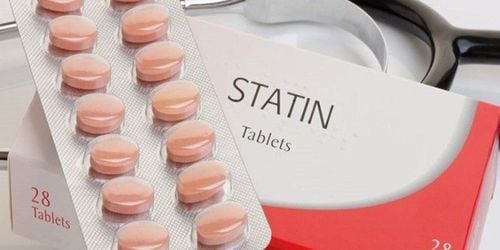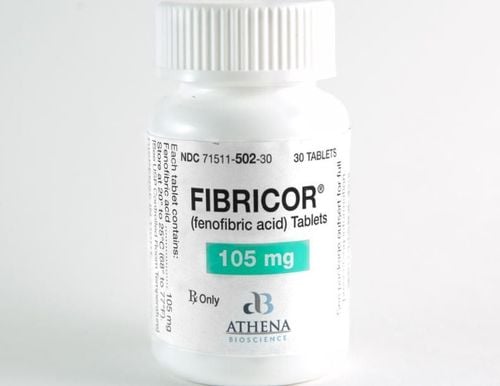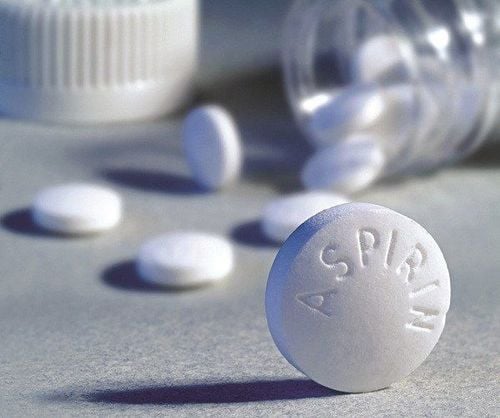This is an automatically translated article.
Cardogrel contains the main ingredient, Clopidogrel, in the form of Clopidogrel bisulphate 75mg - a selective inhibitor of the binding of adenosine diphosphate (ADP) to its receptor in platelets. The drug is used for primary prevention of thromboembolic disorders, control and secondary prevention of patients with atherosclerosis.1. What is Cardogrel?
Cardogrel is a brand name of the active ingredient Clopidogrel that is only used when prescribed by a doctor. The drug is a product of 2/9 Pharmaceutical Joint Stock Company and is prepared in the form of film-coated tablets (boxes of 3 blisters x 10 tablets or boxes of 2 blisters x 7 tablets).
Each Cardogrel tablet contains 75mg of Clopidogrel in the form of Clopidogrel bisulfate and some other excipients just enough.
2. What are the uses of Cardogrel?
The drug is used for the primary purpose of primary prevention of thromboembolic disorders such as myocardial infarction, stroke and peripheral artery disease. In addition, the drug is also used for control and secondary prevention in atherosclerotic patients with recent stroke, myocardial infarction, or peripheral arterial disease.
By selectively inhibiting the binding of ADP to its receptor in platelets, it results in ADP-mediated activation of the GP IIb/IIIa glycoprotein complex, which in turn inhibits platelet aggregation.
Following oral administration, Clopidogrel is rapidly absorbed from the gastrointestinal tract and is unaffected by food, with peak concentrations of metabolites occurring after about 1 hour. Clopidogrel is metabolized by the liver to the inactive carboxylic acid (accounting for 85% of the circulating plasma fraction). Active metabolite - thiol, which binds rapidly and irreversibly to platelet receptors, inhibits platelet aggregation. This is also the main mechanism of action of the drug.
Clopidogrel and its metabolites are excreted in the urine and faeces. The half-life of carboxylic acid is about 8 hours.
3. Instructions for using Cardogrel
Cardogrel is indicated in some of the following cases:
Primary prevention of thromboembolic disorders. Control and secondary prevention in patients with atherosclerosis. In combination with aspirin in acute coronary syndromes without ST-segment elevation, unstable angina or non-Q-wave myocardial infarction. Oral administration, with or without meals. Medication should be taken at the same time of day to increase adherence. Reference dosage is as follows:
75mg 1 time per day. For pregnant women and lactating women: Use with caution and only when prescribed by a doctor. Before prescribing Cardogrel, tell your doctor if you have a known hypersensitivity to any of the ingredients, as well as a history of blood problems. Do not stop taking the medicine on your own without consulting your doctor.
When using the drug will increase the risk of bleeding due to trauma, surgery or other diseases, liver failure. Therefore, the drug should be discontinued at least 5 days before surgery or procedure. Besides, it is necessary to be careful when using sharp objects such as knives, scissors, blades, ... and avoid sports activities that cause strong contact.
Caution is also required in patients with renal impairment. Following administration of the drug at 75 mg daily, plasma concentrations of the major circulating metabolite were lower in these patients. However, no dose adjustment is required for mild renal impairment.
Moreover, when there are signs that the medicine is not working such as chest, jaw, left arm pain, shortness of breath, sweating, hemiplegia, difficulty speaking, vision changes, confusion, etc. .. need to tell the doctor immediately.
Do not tear the medicine packaging, store at a temperature below 30oC and in a dry place, protected from light.
4. Drug interactions
Possible interactions when used with the following drugs:
Aspirin (when used together, consult a doctor). Heparin. NSAIDs (non-steroidal anti-inflammatory drugs). Phenytoin. Tamoxifen. Warfarin. Torsemide. Fluvastatin. Tipranavir. Proton pump inhibitors (PPIs) such as omeprazole, esomeprazole. Fluvoxamine. Fluoxetine. Cimetidine. Fluconazole. Ketoconazole. Voriconazole. Etravirine. Felbamate. Ticlopidine. Avoid eating or drinking grapefruit juice while taking this medication as it may increase the risk of side effects.
5. Cardogrel side effects
Possible side effects of Cardogrel may include:
Bleeding. Bruise. Stomachache. Digestive disorders . Gastritis. Diarrhea or constipation. External Affairs. When a patient experiences serious side effects such as severe abdominal pain, uncontrolled bleeding, vomiting blood or bloody stools, confusion, fainting, rapid heart rate, headache, etc., they should be taken to the hospital. hospital immediately for medical assistance.
Although rare, an allergic reaction is still possible when using the drug. When detecting rash, itching, swelling, dizziness, difficulty breathing (signs of shock), the patient should be taken immediately to the hospital to be treated according to the anaphylaxis protocol approved by the Ministry of Health. onion.
In summary, Cardogrel is a prescription drug used for primary prevention of thromboembolic disorders, control and secondary prevention of patients with atherosclerosis. To ensure safety for your health and maximize the effectiveness of your treatment, you need to take Sulfaprim exactly as directed by your doctor.













